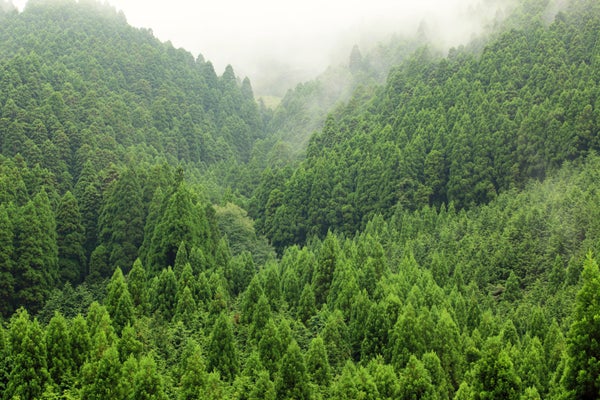The tree people in the Lord of the Rings—the Ents—can get around by walking. But for real trees, well, it's harder to uproot. "Because it's a sessile organism, literally, rooted into the ground, it is unable to leave and go elsewhere." Mario Pesendorfer, a behavioral ecologist at the Cornell Lab of Ornithology. "When a tree first starts growing in a certain area, it's likely that the climatic envelope, so the temperature, humidity, soil composition and so on suits it, because it would otherwise be unable to grow from a seedling. But as it ages, these conditions may change and the area around it may no longer be suitable for its offspring."
And if that happens? Walnuts, hazelnuts, chestnuts, oaks, pines—many rely exclusively on so-called "scatter-hoarders," like birds, to move their hefty seeds to new locales. "Many members of the family Corvidae—the crows, jays and magpies—are scatter-hoarders. Meaning they like to store food for the winter, which they then subsequently retrieve."
Or not. And when they do forget something, a seedling has a chance to grow, sometimes a good distance away. "The Clark's nutcracker, which is found in alpine regions of western North America, is definitely the rock star among the scatter-hoarding corvids. They hide up to 100,000 seeds per year, up to 30 kilometers away from the seed source, and have a very close symbiotic relationship with several pine species, most notably the whitebark pine.”
On supporting science journalism
If you're enjoying this article, consider supporting our award-winning journalism by subscribing. By purchasing a subscription you are helping to ensure the future of impactful stories about the discoveries and ideas shaping our world today.
Pesendorfer and his colleagues catalogue the seed-scattering activities of the Clark's nutcracker and its cousins in a new review paper, in the journal The Condor: Ornithological Applications. [Mario B. Pesendorfer et al, Scatter-hoarding corvids as seed dispersers for oaks and pines: A review of a widely distributed mutualism and its utility to habitat restoration]
They also write that, as trees outgrow their ideal habitats in the face of climate change, or battle new insects and disease, these flying ecosystem engineers could be a big help replanting trees. It's a solution, Pesendorfer says, that's good for us—getting birds to do the work is cheap and effective— and it could give vulnerable oaks and pines the option to truly "make like a tree and leave."
—Christopher Intagliata
[The above text is a transcript of this podcast.]

